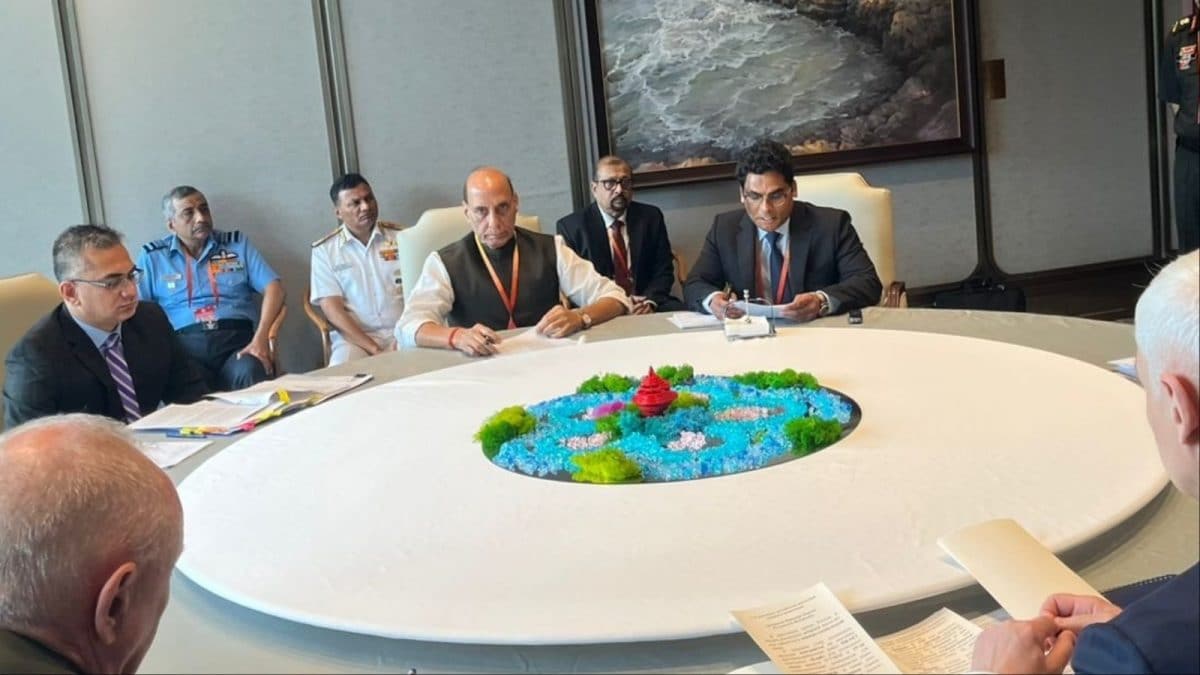ARTICLE AD BOX
Last Updated:June 26, 2025, 03:19 IST
The court also found that, as far as the theory of motive was concerned, the evidence in the case before it seemed to be very vague and vacillating

The SC also pointed out that the law is well settled by a catena of decisions of the court that in an appeal against acquittal, interference can only be made if the only possible view based on the evidence points to the guilt of the accused and rules out his innocence. File pic/PTI
The Supreme Court has said that mere recovery of a blood-stained weapon, even bearing the same blood group as the victim, would not be sufficient to prove the charge of murder.
A bench of Justices Sandeep Mehta and Prasanna B Varale dismissed an appeal filed by the Rajasthan government assailing the judgment of May 15, 2015, rendered by a division bench of the High Court, which accepted the appeal preferred by Hanuman, the respondent herein, and acquitted him.
The SC also pointed out that the law is well settled by a catena of decisions of the court that in an appeal against acquittal, interference can only be made if the only possible view based on the evidence points to the guilt of the accused and rules out his innocence.
The High Court has set aside the judgment of December 10, 2008, passed by the Additional Sessions Judge, Fast Track, Kota, which had convicted the respondent for the offence punishable under Section 302 of the Indian Penal Code and sentenced him to undergo life imprisonment and pay a fine of Rs 100.
The respondent was charged with the murder of one Chotu Lal, which took place on the intervening night of March 1-2, 2007. The FIR was filed against unknown assailants. The respondent was, however, arraigned in the case on the basis of suspicion and circumstantial evidence.
The prosecution claimed the presence of circumstantial evidence in the form of motive, alleging the respondent had “an evil eye on the wife of the deceased", recovery of the weapon of offence and the FSL report indicating that the blood group on the weapon matched with the blood group of the deceased (B+).
In the appeal filed by the accused against his conviction, the High Court held that the prosecution could not prove the complete chain of circumstances required to bring home the guilt of the accused in the case, which was based entirely on circumstantial evidence.
Accordingly, the High Court proceeded to acquit the respondent accused of the charge.
Having heard the extensive arguments advanced by counsel representing the parties and gone through the impugned judgment and the material placed on record, the bench said, “We find that the incriminating circumstances relied upon by the prosecution, i.e., the motive and the recovery of the bloodstained weapon, even taken in conjunction cannot constitute the complete chain of incriminating circumstances required to bring home the charges against the accused".
The High Court seems to have overlooked the FSL report, which was stressed upon by counsel for the appellant, the SC noted.
“However, in our view, even if the FSL report is taken into account, then also, other than the fact that the weapon recovered at the instance of the accused tested positive for the same blood group as that of the deceased (B+), nothing much turns on the said report," the bench opined.
The SC pointed out that the court in the case of Raja Naykar Vs State of Chhattisgarh (2024) held that mere recovery of a bloodstained weapon, even bearing the same blood group as the victim, would not be sufficient to prove the charge of murder.
Besides, the bench also found that as far as the theory of motive was concerned, the evidence in that regard seemed to be very vague and vacillating.
“In the present case, we are duly satisfied that the prosecution failed to lead clinching evidence to bring home the charges. The only possible view is the one taken by the High Court, i.e., the innocence of the accused," the bench said.
The court finally held that the impugned judgment does not suffer from any infirmity warranting interference. It, thus, dismissed the appeal as lacking merit.

Sanya Talwar, Editor at Lawbeat, has been heading the organisation since its inception. After practising in courts for over four years, she discovered her affinity for legal journalism. She has worked previousl...Read More
Sanya Talwar, Editor at Lawbeat, has been heading the organisation since its inception. After practising in courts for over four years, she discovered her affinity for legal journalism. She has worked previousl...
Read More
- Location :
- First Published:
News india Recovery Of Bloodstained Weapon With Victim’s Blood Group Not Enough For Murder Conviction: Supreme Court



.png)
.png)
.png)
















 6 hours ago
3
6 hours ago
3









 English (US) ·
English (US) ·